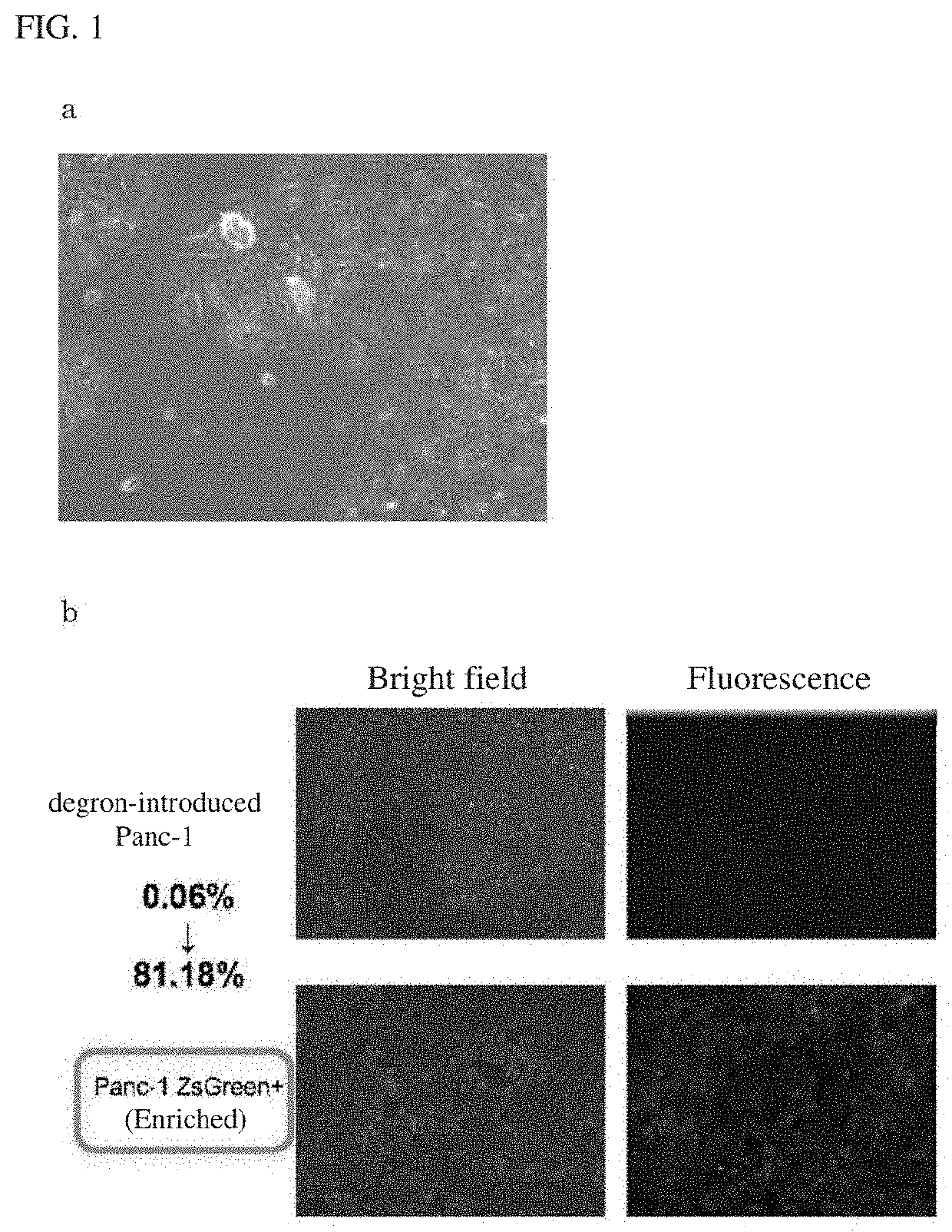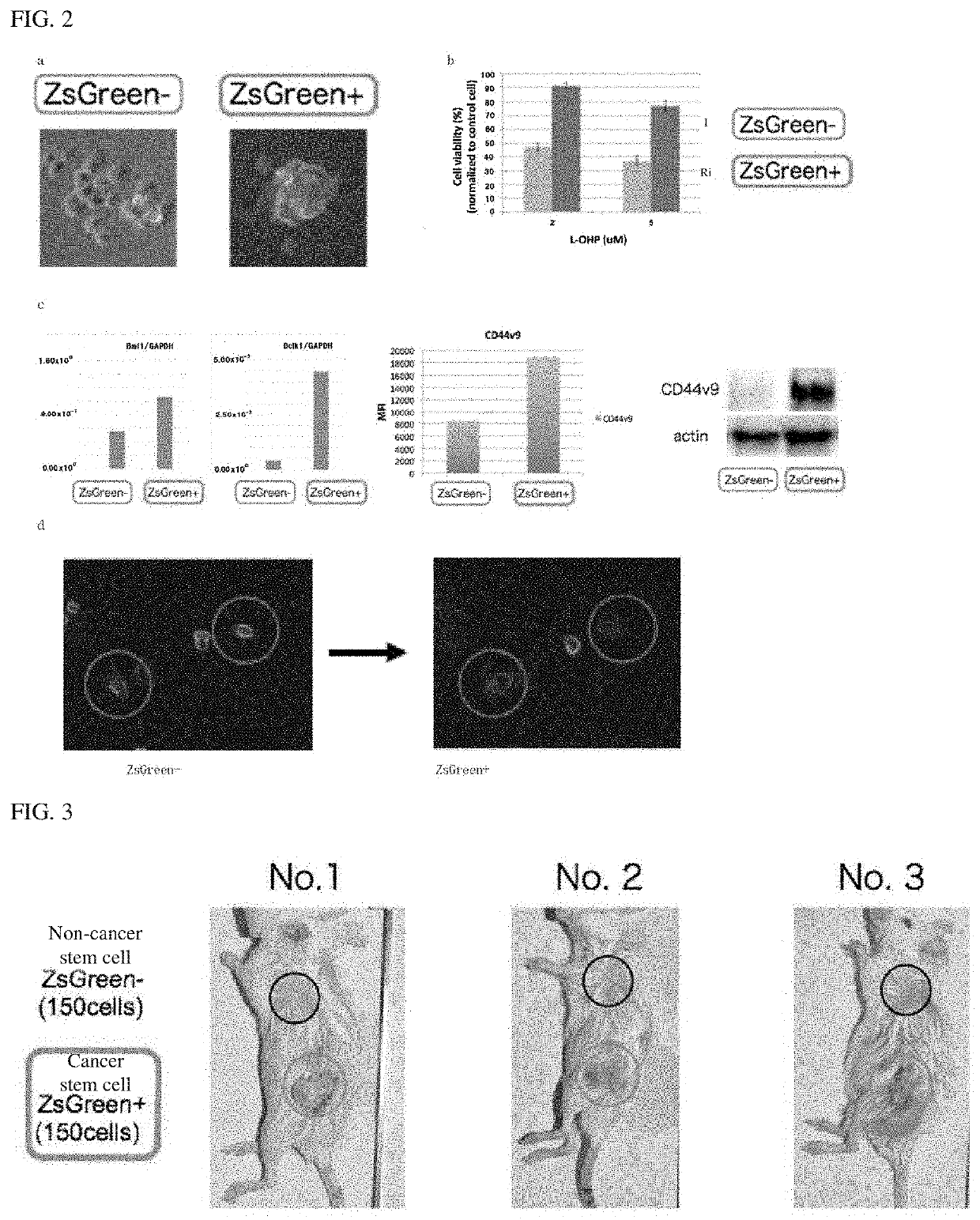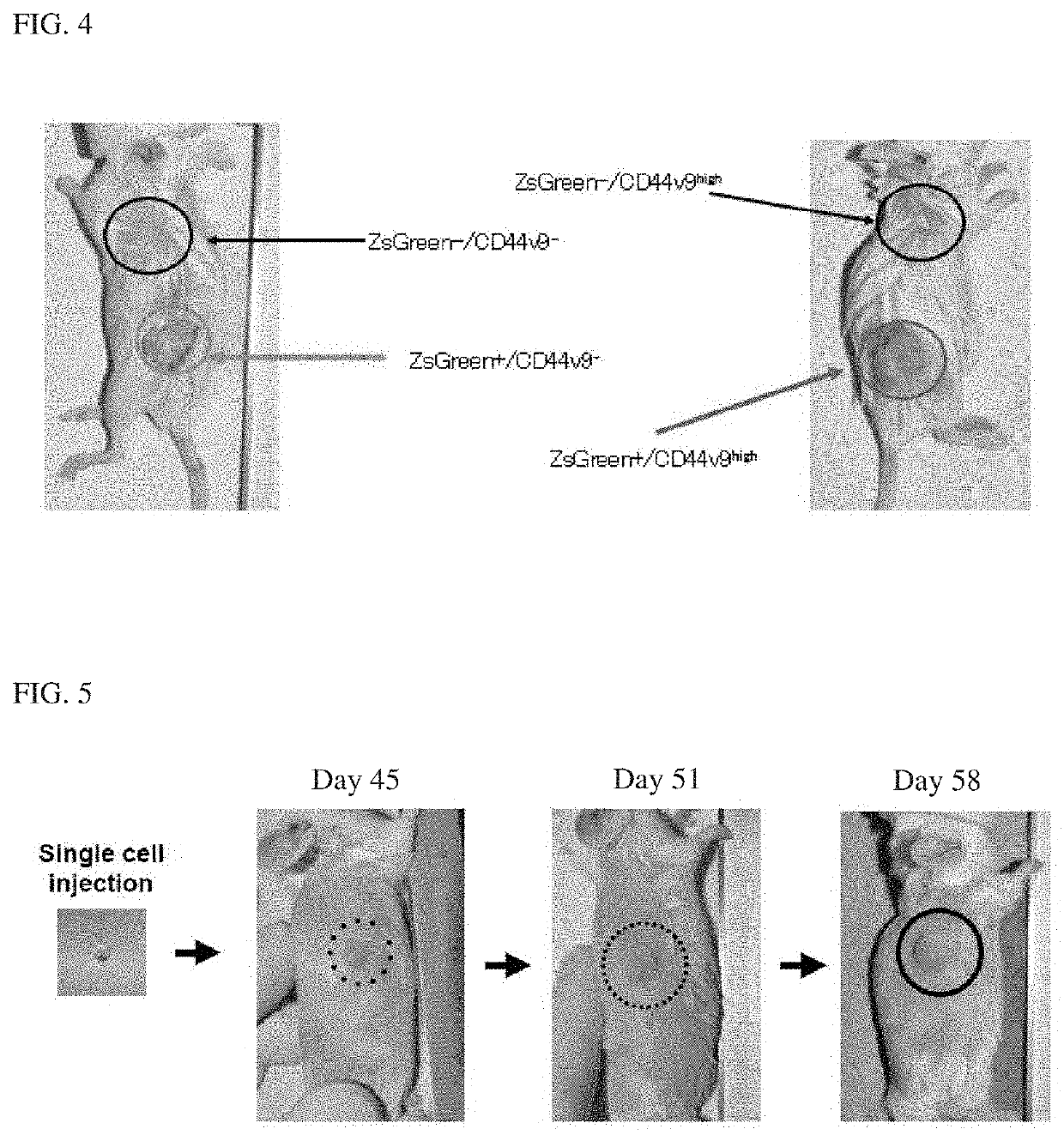Cancer stem cell
- Summary
- Abstract
- Description
- Claims
- Application Information
AI Technical Summary
Benefits of technology
Problems solved by technology
Method used
Image
Examples
example 1
Separation and Characteristic Analysis of Cancer Stem Cell
[0083]1. Separation of Cancer Stem Cell
[0084]A pancreatic cancer cell line (Pane-1) was transduced with a GFP-fluorescently labeled ODC (Ornithine Decarboxylase)-Degron system using a retrovirus vector. The base sequence coding the used ODC-Degron is as set forth in SEQ ID NO: 1. After transduction, culture and selection were performed for 2 to 3 weeks, and the cells were observed. The results are shown in FIG. 1a. As can be seen from FIG. 1a, even when the ODC-degron system was introduced into the pancreatic cancer cell line Panc-1, only about 0:06% cells (cancer stem cells) emitting fluorescence were obtained in total. Such a small number of cancer stem cells do not allow for a series of experiments including drug screening.
[0085]For this reason, next, cells (cancer stem cells) emitting fluorescence (green) were sorted using a cell sorter (SH800Z purity sorting mode by SONY Corporation), followed by 2 weeks of culture in a ...
example 2
Separation and Characteristic Analysis of Cancer Stem Cell Highly Expressing CD44v9
[0096]1. Separation of Cancer Stem Cell Highly Expressing CD44v9
[0097]As to the cancer stem cell population (ZsGreen+) and the non-cancer stem cell population (ZsGreen−) obtained in Example 1, they were divided into a group highly expressing CD44v9 or a group not highly expressing CD44v9 depending on the expression level of CD44v9 by FACS using an anti-CD44v9 antibody. Compared to cells having the lowest expression level of CD44v9 (detection threshold) in the cell population, cells having 10 times or ore expression level of CD44v9 were grouped as high expression of CD44v9, and cells having less than 5 times expression level of CD44v9 were as non-high expression of CD44v9. Hereinafter, a cell population having high expression of CD44v9 is denoted as “ZsGreen+ / CD44v9high” in the cancer stem cell population (ZsGreen+), a cell population non-highly expressing CD44v9 in the cancer stem cell population (ZsG...
example 3
[0105]Establishment of cancer stem cell line from ZsGreen+ / CD44v9high cell population and analysis of tumorigenicity thereof.
[0106]1. Establishment of Cancer Stem Cell Line
[0107]The ZsGreen+ / CD44v9high cell population was cultured in a medium containing an antibiotic G418, and then mouse-derived cells were removed for cell line establishment. The established cancer stem cell line was subjected to pure culture, and the resultant cells were stocked (1×106 cells / ml of CELLBANKER cell cryopreservation solution). One of the established cancer stem cell lines was designated as “Panc-1 3-4 CST 001 line” and deposited at National Institute of Technology and. Evaluation (Accession Number: NITE BP-02449).
[0108]2. Analysis of Tumorigenicity
[0109]The tumorigenicity of the established cancer stem cell lines was analyzed. For the test method, the same condition as that of “3. Analysis of tumorigenicity” described in Example 1 was adopted, except that the number of cells to be administered was one...
PUM
| Property | Measurement | Unit |
|---|---|---|
| Electrical conductance | aaaaa | aaaaa |
| Therapeutic | aaaaa | aaaaa |
Abstract
Description
Claims
Application Information
 Login to View More
Login to View More - R&D
- Intellectual Property
- Life Sciences
- Materials
- Tech Scout
- Unparalleled Data Quality
- Higher Quality Content
- 60% Fewer Hallucinations
Browse by: Latest US Patents, China's latest patents, Technical Efficacy Thesaurus, Application Domain, Technology Topic, Popular Technical Reports.
© 2025 PatSnap. All rights reserved.Legal|Privacy policy|Modern Slavery Act Transparency Statement|Sitemap|About US| Contact US: help@patsnap.com



